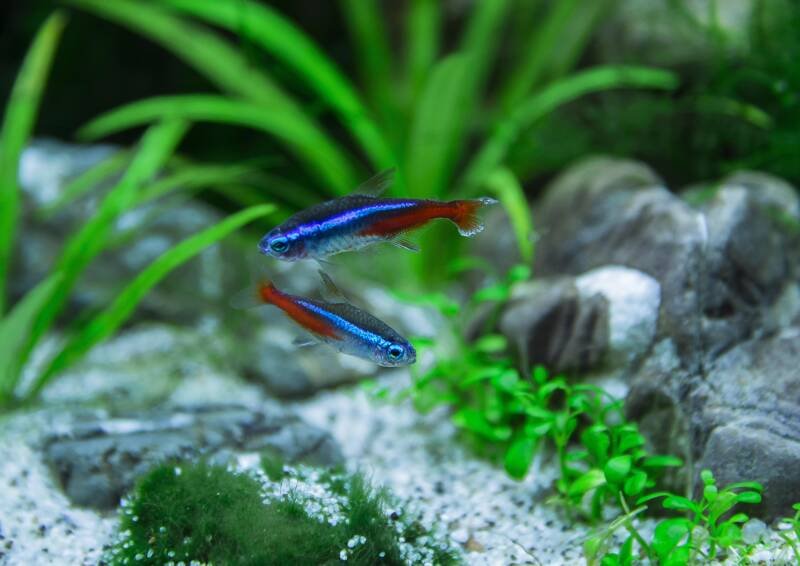Tetra Eggs In Tank
Tetra fish are small freshwater fish that come in different colors. They are easy to maintain and are popular for aquariums. One interesting aspect of tetra fish is that they lay eggs in their tanks. It may be surprising to some, but understanding tetra eggs in tank is important for the health and sustainability of these fish. In this article, we will explore tetra eggs in tank and what it means for your aquarium.
Possible Issues with Tetra Eggs in Tank
When tetra eggs are laid in tanks, there may be potential problems to address. For example, if the water quality in the tank isn't good, the eggs will not hatch, resulting in wasted eggs. Additionally, if the water temperature is too high or too low, the eggs will not hatch, leading to another wasted batch. Lastly, if the eggs are not cared for properly, they can easily be eaten by adult fish or become diseased, which further complicates the process.
Why Do Tetra Fish Lay Eggs in Tanks?
Tetra fish lay eggs inside the tank as part of their natural breeding behavior. In the wild, tetra fish lay eggs on submerged plants. In captivity, since the plants and rocks in the tank provide a similar environment to their natural habitat, they will lay their eggs on these surfaces. While this natural breeding process is not necessary for tetra fish to survive in a tank, it does add to the overall beauty and diversity of the tank’s ecosystem.
Main Points of Tetra Eggs in Tank
Tetra fish lay eggs in their tanks, and these eggs may require extra care to sustain healthy hatching. Water quality, temperature, and proper care for the eggs are essential to allow the eggs to hatch and develop. Tetra eggs in tank are natural, and the breeding process does not harm them. However, it does introduce a natural and breathtaking aspect to the aquarium’s ecosystem.
Understanding Tetra Eggs in Tank and Breeding Behavior
Tetra eggs in tank serve as an excellent indicator that breeding has occurred between fish in your tank. It's a unique and challenging experience that requires proper monitoring and preparation. Many fish owners find that having a separate breeding tank is a better solution than trying to breed fish directly in the main tank. This allows for better control over the breeding process and decreases the likelihood of adult fish eating the eggs.

When breeding tetra fish in a separate breeding tank, you will need to separate the female fish from the male fish once the eggs are laid. This will prevent the male fish from eating the eggs and allow you to monitor the eggs’ development more closely. It's also essential to keep the water quality stable during the breeding process, so as not to hurt the eggs or fry. Many aquarists use sponge filters to keep the tank clean while also ensuring adequate filtration for developing eggs and fry.
Caring for Tetra Eggs in Tank
Following proper care protocols for tetra eggs in tank will ensure that fry hatch and develop healthily. Start by setting the temperature of the water between 75 and 80 degrees Fahrenheit. Proper filtration is necessary during this breeding period, and a sponge filter is an ideal option to avoid creating strong water currents that can cause damage to the eggs. If the eggs adhere to the tank’s glass, move them gently to the bottom of the tank or place a breeding net around them to protect them and facilitate growth.

Feeding Fry After Hatching
After hatching, tetra fry should be given infusoria (protists and other microorganisms that grow in water) that serve as food for a few days before moving on to baby brine shrimp or a high-quality liquid fry food. Larger tetra fry can be fed crushed high-quality flake food. It's also recommended to perform daily small water changes to ensure optimal fry growth and avoid disease.
Question and Answer About Tetra Eggs in Tank
Q: How can I protect tetra eggs in tank from adult fish?
A: Separating the male fish from the female fish after eggs are laid will protect tetra eggs and allow for easy monitoring.
Q: How long does it take for tetra eggs to hatch?
A: Tetra eggs will hatch within 24-36 hours if properly cared for.
Q: Do tetra fish reproduce at all times of year?
A: Tetra fish reproductive activity is linked to seasonal changes, which may vary depending on the species.
Q: How many eggs do tetra fish lay in a breeding tank?
A: The number of eggs tetra fish lay varies by species, age, and condition, but on average between 100 and 200 eggs are laid per female.
Conclusion of Tetra Eggs in Tank
Understanding tetra eggs in tank is essential for the health of tetra fish and the aquarium's ecosystem. It's crucial to maintain healthy water quality and temperature for the eggs and fry to hatch properly. Proper care and feeding of the fry after hatching, as well as prevention of adult fish from eating the eggs, are essential aspects of breeding tetra fish in tanks. With proper attention, creating a sustainable breeding environment in a home aquarium can be a rewarding and fulfilling experience for any aquarist.
Gallery
Pregnant Neon Tetra? What To Look For (Guide)

Photo Credit by: bing.com / neon tetra eggs pregnant tetras guide
Neon Tetra Eggs. I Hope They Hatch. : Aquariums

Photo Credit by: bing.com / tetra hatch aquariums
Are These Pristella Tetra Eggs?? | Tropical Fish Keeping
Photo Credit by: bing.com / tetra
Is My Tetra Carrying Eggs? : Aquariums

Photo Credit by: bing.com / tetra eggs carrying comments aquariums
Neon Tetra Eggs??! | My Aquarium Club

Photo Credit by: bing.com / tetra neon aquarium